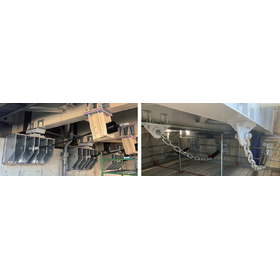High thixotropic type non-polymer non-shrink cross-section repair mortar material, capable of ultra-thick application exceeding 10 cm in a single spray.
"Naoshi Tar N" is a premixed type of mortar for sectional repair that does not use polymers and can be used by adding a specified amount of water and mixing it during use. It can be applied using spray application methods, and spraying is possible on the first floor at heights exceeding 10 cm. For surface finishing, trowel finishing can be performed, allowing for a typical concrete surface finish. As an example of use, it can be applied without using formwork during RC thickening construction, making it cost-effective and allowing for quick application. It is a non-polymer resin mortar with excellent thixotropic properties, enabling easy flat finishing with trowel work, while not causing sagging during spraying.
Inquire About This Product
basic information
【Features】 ○ It has high strength performance and excellent adhesion strength. ○ It has high non-shrink performance and can be used for civil engineering structures such as tunnels and bridges, as well as for section repairs of building structures. ○ It can be applied by spraying, making it easy to use. ○ It is possible to apply a super thick spray of over 10 cm. For more details on Naoshi Taru N, please download the catalog or contact us.
Price information
-
Delivery Time
P3
Applications/Examples of results
【Example of Use】 Large cross-section repairs of architectural structures can be carried out without formwork. A thickness of over 10 cm can be applied in a single spray, even on ceiling areas. For details on Naoshi Taru N, please download the catalog or contact us.
catalog(1)
Download All CatalogsCompany information
Our company was established as a venture firm with the aim of proposing new methods necessary for the maintenance and management of social infrastructure facilities by utilizing excellent advanced technologies researched at Waseda University and its collaborative research institutions, both on and off campus, and returning the results to society. In particular, the NSIRB and NSIS testing methods, which involve applying impact to structures and measuring their responses to obtain the natural frequencies of the structures, are groundbreaking non-destructive testing techniques that allow for the assessment of structural integrity based on the high or low values of these frequencies. This method can be widely applied in civil engineering, architecture, utility poles, sign poles, and more.









![[NETIS Registration] Ultra-thin sensor for concrete filling and compaction management](https://image.www.ipros.com/public/product/image/073/2000431206/IPROS27902374793734358032.jpeg?w=280&h=280)


